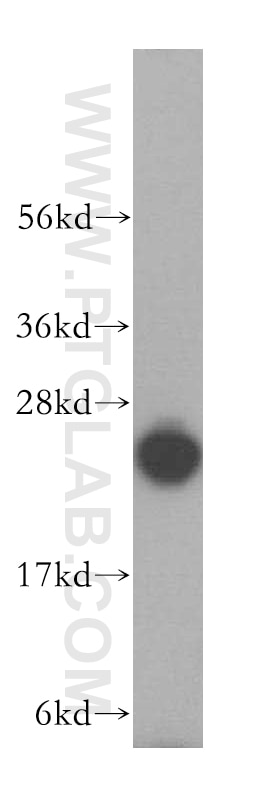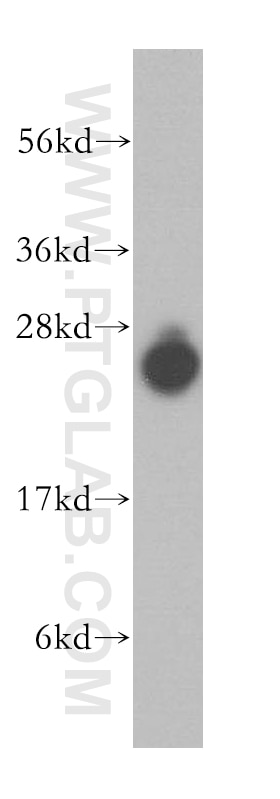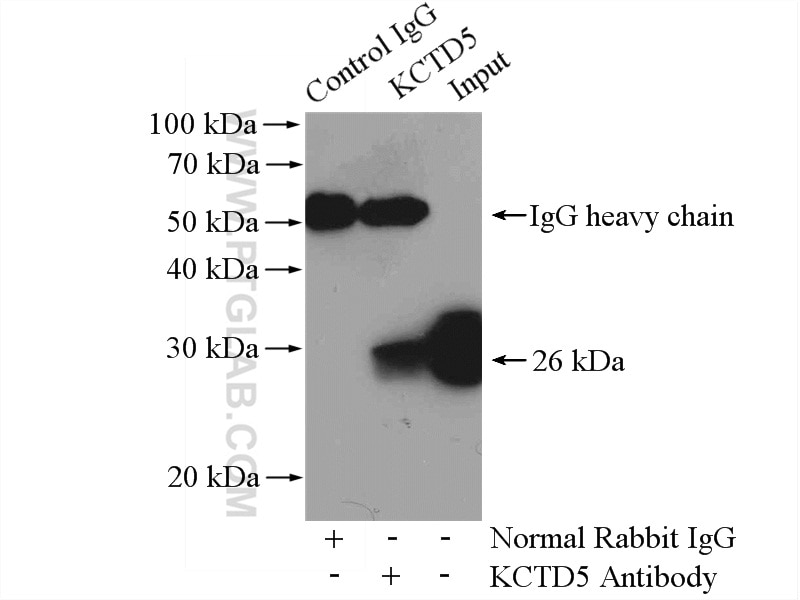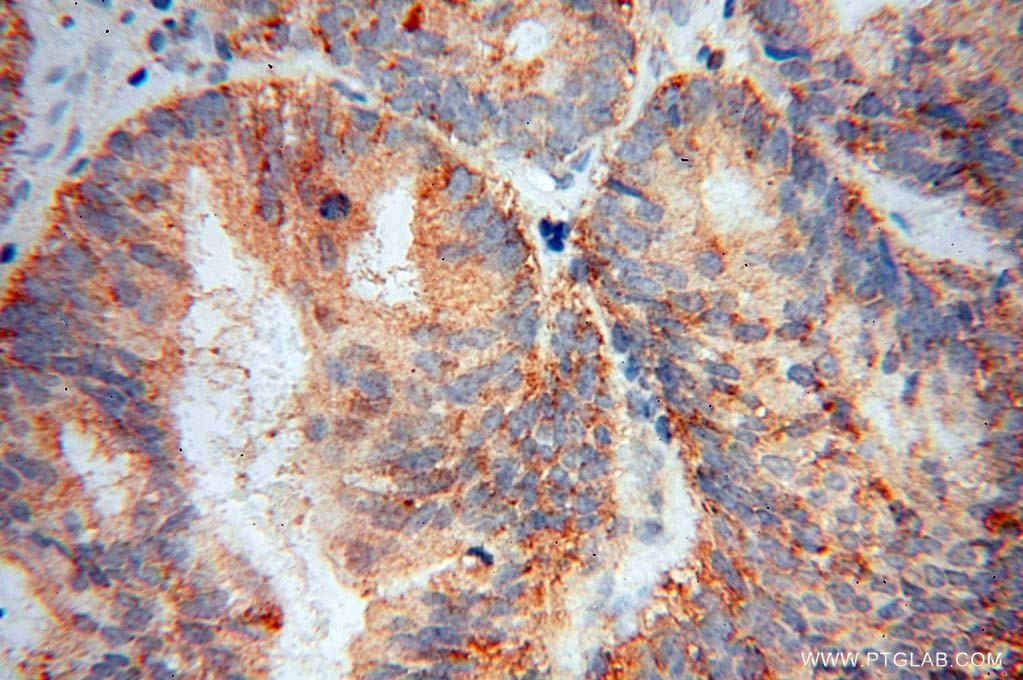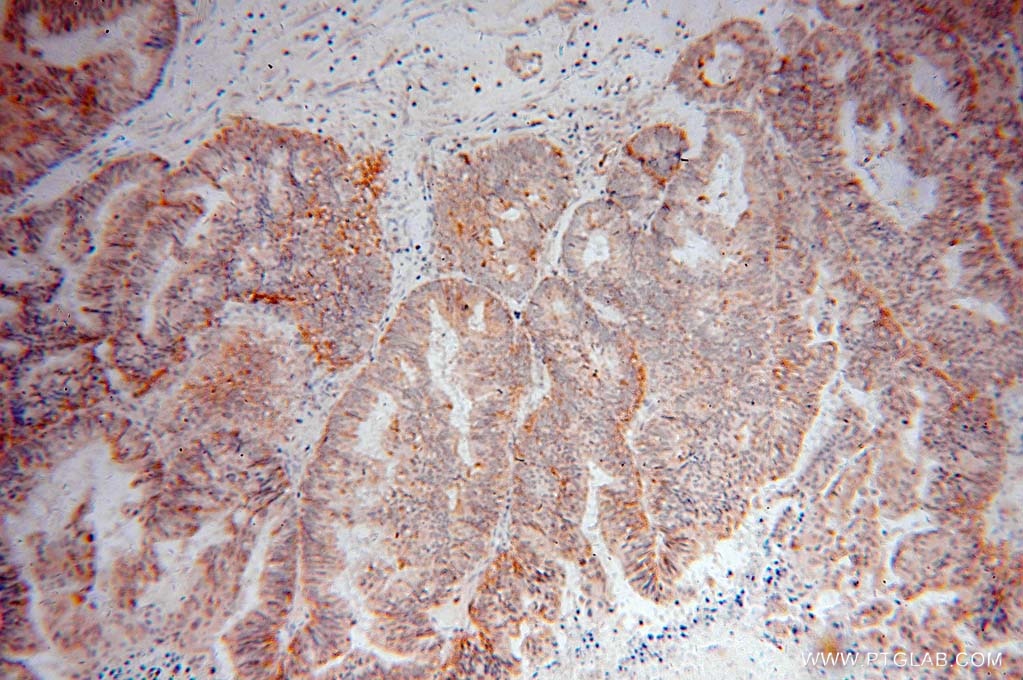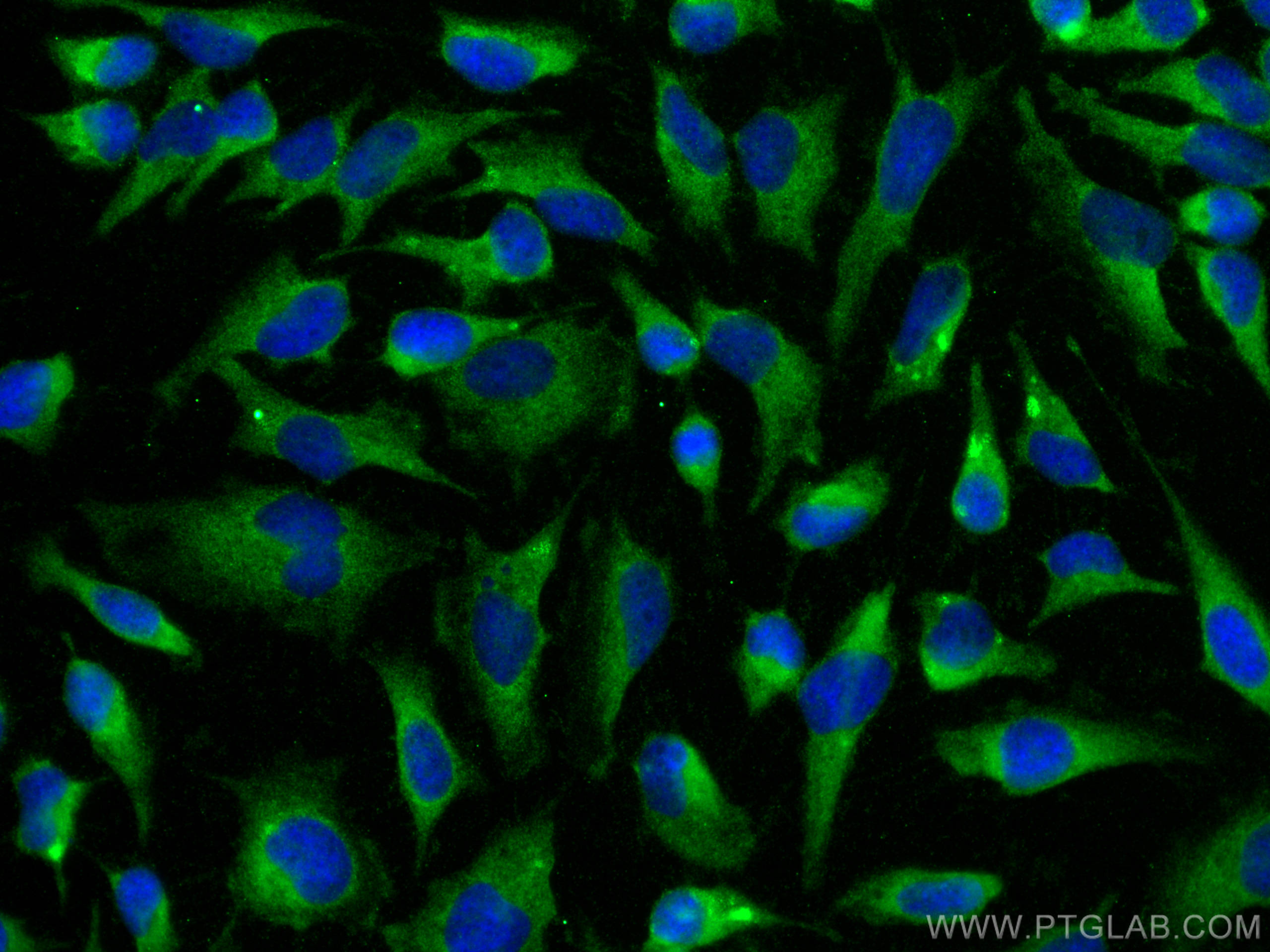Tested Applications
| Positive WB detected in | HeLa cells, human brain tissue |
| Positive IP detected in | HeLa cells |
| Positive IHC detected in | human ovary tumor tissue Note: suggested antigen retrieval with TE buffer pH 9.0; (*) Alternatively, antigen retrieval may be performed with citrate buffer pH 6.0 |
| Positive IF/ICC detected in | HeLa cells |
Recommended dilution
| Application | Dilution |
|---|---|
| Western Blot (WB) | WB : 1:500-1:2000 |
| Immunoprecipitation (IP) | IP : 0.5-4.0 ug for 1.0-3.0 mg of total protein lysate |
| Immunohistochemistry (IHC) | IHC : 1:20-1:200 |
| Immunofluorescence (IF)/ICC | IF/ICC : 1:200-1:800 |
| It is recommended that this reagent should be titrated in each testing system to obtain optimal results. | |
| Sample-dependent, Check data in validation data gallery. | |
Published Applications
| KD/KO | See 2 publications below |
| WB | See 9 publications below |
| IP | See 1 publications below |
Product Information
15553-1-AP targets KCTD2/5/17 in WB, IHC, IF/ICC, IP, ELISA applications and shows reactivity with human, mouse, rat samples.
| Tested Reactivity | human, mouse, rat |
| Cited Reactivity | human, mouse, rat |
| Host / Isotype | Rabbit / IgG |
| Class | Polyclonal |
| Type | Antibody |
| Immunogen | KCTD2/5/17 fusion protein Ag7915 Predict reactive species |
| Full Name | potassium channel tetramerisation domain containing 5 |
| Calculated Molecular Weight | 26 kDa |
| Observed Molecular Weight | 26 kDa |
| GenBank Accession Number | BC007314 |
| Gene Symbol | KCTD5 |
| Gene ID (NCBI) | 54442 |
| RRID | AB_2132155 |
| Conjugate | Unconjugated |
| Form | Liquid |
| Purification Method | Antigen affinity purification |
| UNIPROT ID | Q9NXV2 |
| Storage Buffer | PBS with 0.02% sodium azide and 50% glycerol pH 7.3. |
| Storage Conditions | Store at -20°C. Stable for one year after shipment. Aliquoting is unnecessary for -20oC storage. 20ul sizes contain 0.1% BSA. |
Background Information
KCTD5 belongs to the human potassium (K+) channel tetramerization domain (KCTD) family of proteins which share sequence similarity with the cytoplasmic domain of voltage-gated K+ channels (Kv channels). The KCTD proteins have relatively conserved N-terminal domains and variable C-termini (PMID: 24268103). KCTD5 interacts with cullin3 and has been proposed to function as substrate adapter for cullin3 based ubiquitin E3 ligases (PMID: 26188516). This polyclonal antibody raised against full-length recombinant protein of human KCTD5 (26 kDa) can cross-react with other KCTD proteins, including KCTD2 (29 kDa), KCTD17 (33-36 kDa).
Protocols
| Product Specific Protocols | |
|---|---|
| WB protocol for KCTD2/5/17 antibody 15553-1-AP | Download protocol |
| IHC protocol for KCTD2/5/17 antibody 15553-1-AP | Download protocol |
| IF protocol for KCTD2/5/17 antibody 15553-1-AP | Download protocol |
| IP protocol for KCTD2/5/17 antibody 15553-1-AP | Download protocol |
| FC protocol for KCTD2/5/17 antibody 15553-1-AP | Download protocol |
| Standard Protocols | |
|---|---|
| Click here to view our Standard Protocols |
Publications
| Species | Application | Title |
|---|---|---|
Sci Adv Structural basis for the ubiquitination of G protein βγ subunits by KCTD5/Cullin3 E3 ligase | ||
Nat Commun Knowledge graph-based recommendation framework identifies drivers of resistance in EGFR mutant non-small cell lung cancer.
| ||
Elife Genome-wide CRISPR screening reveals genetic modifiers of mutant EGFR dependence in human NSCLC. | ||
PLoS Genet Conserved properties of Drosophila Insomniac link sleep regulation and synaptic function. | ||
Commun Biol Genome-wide CRISPR screens identify the YAP/TEAD axis as a driver of persister cells in EGFR mutant lung cancer |
